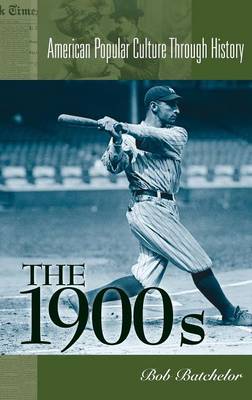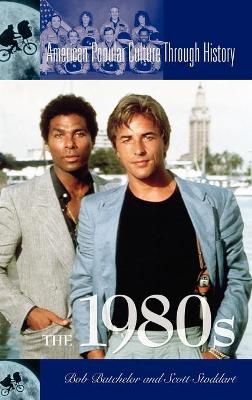American Popular Culture Through History
3 total works
Providing an exciting picture of American life at the dawn of the 20th century, this volume covers:
• Innovations in technology, such as the airplane and the automobile
•The advent of modern architecture
•The proliferation of advertising aimed at the new middle class
•Fads, games, sports, and hobbies
•Changes in fashion and cuisine
This book also features the burgeoning of the arts, including the school of realism and naturalism in literature, the first truly American music-jazz-and the new performing art that played to American tastes: vaudeville. A wealth of facts, information, and interesting sidelights not available elsewhere makes this a treasure trove for students and interested readers.
Welcome to Pop Culture 2.0. In the 2000s, Generation eXposure, emerged from the marriage of new technology and the nation's obsession with celebrity. Social media technology, such as MySpace, YouTube, Facebook, and countless blogs, gave everyman a voice and a public persona that they could share with friends across the street or around the world. Suddenly, it was not enough to imitate Britney Spears or Paris Hilton, technology gave everyone a platform to launch their own 15 minutes of fame. The fixation on self and celebrity acted as a diversion from more serious challenges the nation faced, including President George W. Bush's War on Terror. The wars overseas sharply divided the country, after a moment of national unity after the terrorist attacks on 9/11, which took away one of the world's most recognizable buildings. The era witnessed interest rates dropping to historic lows, but later subprime became one of the most searched terms on Google as the nation teetered on recession. Big was in like never before and suddenly people nationwide could buy or build their own McMansion-a slice of the American dream. While supersized homes and fast food meals became commonplace, the electronics and transportation advances proved that good things came in increasingly smaller packages. Apple's iPod reinvented how people interacted with music, hybrids changed thoughts on fuel efficiency as a gallon of gas topped $3. Cell phones usage ballooned in our always on society, while physically shrinking to the size of a deck of cards. Yes, me-centric Pop Culture 2.0, which the pundits predicted would some day arrive, burst onto the scene and ultimately transformed the way we interact with one another and the world around us.
Chapters inside the latest volume in the American Popular Culture Through History series explore various aspects of popular culture, including advertising, literature, leisure activities, music visual arts, and travel. Supplemental resources include a timeline of important events, cost comparisons, and an extensive bibliography for further reading.
The eighties are seen by many as a time of excess and extremes. From Boy George to Madonna, metal heads to valley girls, and workout clothes to shoulder pads, many pushed the boundaries of what was was conventional. After a decade of war, disillusionment of the government, advances in civil rights, and disco, Americans became status seekers and shopaholics and the Me generation was born. Twelve narrative chapters describe the decade of decedence and its impact on popular culture including: the AIDS epidemic, preppies, Miami Vice, the Rubik's Cube, E.T., hair bands, the advent of the personal computer, malls, Ronald Reagan, Pac-Man, Cheers, Stephen King, Michael Jackson, the shuttle Challenger explosion, Bonfire of the Vanities, music videos, Roseanne, the power suit, Less Than Zero, rap music, and The Cosby Show, among many others.
Chapters on Everyday America and the World of Youth describe the important changes in American society, from Ronald Reagan's War on Drugs, to latch-key kids, to Black Monday. The following ten chapters explore the many aspects of popular culture-everything from advertising to fashion, literature to music, travel to the visual arts-that influenced Americans in the eighties. Supplemental resources include a timeline of important events, an extensive bibliography for further reading and a subject index.


